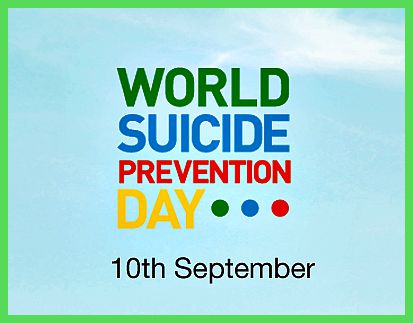Hurting Authentic Education Reform

Photo by Aaron Burden on Unsplash
“Hurting Authentic Education Reform”
By Donna Garner
7.9.18
/hurting-authentic-education-reform/
NO REAL HELP FROM TEXAS PUBLIC POLICY FOUNDATION
Case in point: The Texas Public Policy Foundation (TPPF) is continuing to hurt authentic education reform. Going all the way back to 1989, I have tried to get TPPF leadership to invest their time and efforts to involve themselves productively in the two most important aspects of any school environment: (1) consistent discipline and (2) quality Type #1 curriculum — in that order. I have never known TPPF to do one thing to help improve those two all-important aspects of education.
As we have fought to get Type #1 (traditional, academic) curriculum standards adopted in Texas, we never had TPPF come alongside us to battle the leftists. Years ago, I even helped in the political campaign of the person who later became the head of TPPF. I just knew she would help to lead TPPF in the right direction to help us bring about education reform. Did not happen…
In 1995-97, when we classroom teachers wrote the Texas Alternative Document (TAD — curriculum standards for English/ Language Arts/Reading) on our own time and at our own expense, we begged TPPF leadership for their help to get the TAD approved by the elected members of the State Board of Education.
We teachers had no money and no political clout; yet our TAD gained national recognition because of its sensible and doable academic content which contained phonemic awareness/phonics, grammar/usage, spelling, vocabulary, cursive writing, penmanship, classic literature, expository/persuasive/narrative/descriptive writing, and research writing.
No classroom teachers (before or since) have ever written a curriculum standards document for K-12. (My husband and I spent $12,000 of our own hard-earned money in one year on the TAD – never to be recovered.)
We teachers (who were working full-time and were taking personal leave to go to Austin to do battle) truly needed TPPF’s support as we fought the national/leftist groups that flooded into Texas to defeat our TAD because they knew that if Texas adopted such Type #1 standards upon which textbooks would be built, then the rest of the nation might do the same.
Where was TPPF at such a dramatic time in the history of authentic education reform? In fact, where was TPPF when we concerned citizens all across America started battling Obama’s Common Core/Type #2 philosophy of education and its eventual indoctrination over the last eight years of America’s students? TPPF was nowhere to be found, and we needed this organization’s help very badly because they had the ear of the Governor and the Texas Legislature.
[“The Two Philosophies of Education — Chart That Explains Type #1 vs. Type #2” — /comparison-types-education-type-1-traditional-vs-type-2-cscope-common-core/ ]
It greatly saddens me that TPPF and its minions have wormed their way into the Trump administration. Brook Rollins, formerly the president and CEO of the Texas Public Policy Foundation, currently serves as assistant to President Donald Trump in the Office of American Innovation. TPPF now has an office in Washington, D. C. [6.17.18 — “Deceptive Semantics – Texas Public Policy Foundation (TPPF) goes to Washington Promoting Public Private Partnerships” – by Alice Linahan — http://www.voicesempower.com/deceptive-semantics-texas-public-policy-foundation-tppf-goes-to-washington-promoting-public-private-partnerships/ ]
I love what Donald Trump is doing as President, but I believe he is listening to the wrong people when it comes to education issues. These wrong people include Jeb Bush and his vast “kingdom of tentacles” including TPPF.
[Please read — 6.24.18 — “Do Not Want American Dream To Be Replaced with American Nightmare Job: No Merger of Ed. and Labor Depts.” — By Donna Garner — EdViews.org — /do-not-want-american-dream-to-be-replaced-with-american-nightmare-job-do-not-want-dept-of-ed-to-merge-with-dept-of-labor/ ]
CONCERNS WITH PUBLIC-PRIVATE PARTNERSHIPS AND/OR CHARTER SCHOOLS
Public-private partnerships in education are largely made up of people who know very little about true education reform, school/classroom discipline, quality Type #1 curriculum/tests, and the importance of fact-based academic standards and curriculum that grow in depth and complexity from K – 12. The driving force with most of these people is that they know how to make a profit on the backs of the taxpayers and how to keep the Chambers of Commerce happy by forcing young students into career pathways at the whim of the federal government.
As I have said many times before, heaven help those students who are forced to choose a career pathway with specialized instruction at too early an age.
I often think of the iPhone. Just by the development of this one miraculous techie device, the following markets have been devastated: tape recorders, alarm clocks, weather thermometers, calendars, cameras, books/novels, notepads, maps, pulse machines, retail stores, radios, calculators, flashlights, newspapers, stock market reports, weather reports, hard-copy newspapers, musical instruments, movie reviews, notepads, sleep noise machines, filing cabinets, computers, etc. What about the employees who used to work in these markets, many of which no longer exist?
If students are forced to choose a career pathway with specialized courses too early in life without receiving a well-rounded, liberal arts education, they are helpless and unable to convert successfully to another career; and worse than that, these specialized students have such a shallow breadth of knowledge that they are unable to think logically and to analyze the current events around them. This makes them open to scam artists and fake news, causing them to be uninformed voters who do not know, respect, nor value the sacrifices of those who have come before us.
THE REAL PROBLEMS WITH CHARTER SCHOOLS
In the state of Texas as in others, it is not that difficult for a public-private partnership to gain a foothold without producing any independent, peer-reviewed, quantitative research to prove the particular charter school has raised students’ academic achievement.
Money speaks; and lots of money speaks loudly. With money comes PR and media people who know how to spin a charter school’s ear-pleasing niche. Parents are lured into these charters by skillful PR schemes without knowing who the nefarious people are behind these schools. Some of these charters are tied to people groups who seek to indoctrinate our American students into anti-American dogma. Other charters are just money-making machines for investors who are out to gain a profit but who have little-to-no knowledge about what makes a really good school: (1) consistent discipline and (2) quality Type #1 curriculum.
Not all charter schools are bad, but the whole concept should give parents pause. Charter schools (paid for with taxpayers’ dollars) have very little accountability (if any) to the people who pay for them. Charter schools do not have school boards elected by the public. In many instances, one “mother” charter gets approved at the state level and is then free to have “baby” charters (satellite classrooms) all around the state. Normally there is one school board (not elected by the public) and one superintendent at the “mother” level. The school board members are largely figureheads who have very little if any real knowledge or concern over the “baby” charters and over what happens in those satellite classrooms. To whom do the parents in those “baby” charters complain? If they go to the local officials, they tell the parents to take up their concerns with the “mother” officials who could well be located hundreds of miles away.
WHERE THE PUBLIC SHOULD FOCUS THEIR EFFORTS
I empathize with parents who are desperate to find a good school for their children. What I desire is that these parents would spend their time and energy to help expand efforts to bring Type #1 curriculum standards/tests/curriculum back to all of our schools – public/charters, private, home schools. Educating our children to be well-rounded, knowledgeable citizens who are equipped with a “deep and wide” understanding of fact-based content would help to insulate them from the unhealthy culture around them.
Even that person working at a rather menial job needs to have been taught to appreciate art, classic literature, music, the great ideas of the world, the knowns and unknowns in science, the mysteries of the universe, and the mathematical principles upon which so much of our modern culture rests. All American students should have been taught to value the lives of the heroes and heroines who have influenced the future of our nation and of our world. We must not allow students to be deprived of becoming the multi-talented adults they have been equipped by God to become.











 Universities risk losing their credibility due to “rocketing” grade inflation, a think tank has said.
Universities risk losing their credibility due to “rocketing” grade inflation, a think tank has said.






In my opinion, it isn’t that DJT is listening to the wrong people, he is being told to whom he must listen, and appoint. The puppet hut a/k/a the White House, is the weakest political position in the U. S. government complex. No one ascends either political party without being controllable and corruptible. Those atop the backstablishment are controlled by Darwinian predators, who are anti-God, anti-family, anti-liberty, so they are also, anti-sovereignty & anti-republic. Why else is DeVos in her position, pushing ‘European’ ‘education’ upon U. S. students?